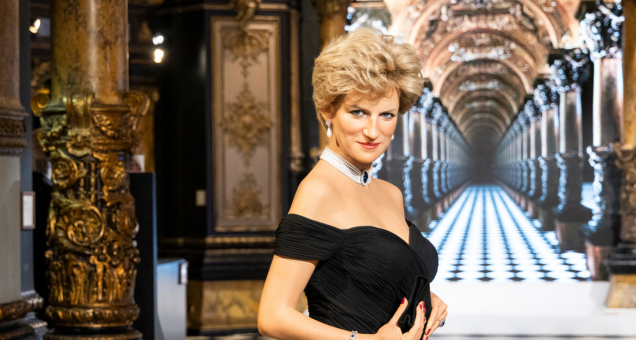Cairns and its environs offer a wealth of experiences on Australia’s east coast.
Asian visitors to Australia’s East Coast often descend on Sydney and Melbourne, teeming metropolises of 5 million with fabulous dining, diverse shopping, and endless entertainment. But Cairns, a carefree city of 150,000 in Tropical North Queensland, has much to excite travellers — plush hotels, polished restaurants, cool bars and numerous natural attractions close by.
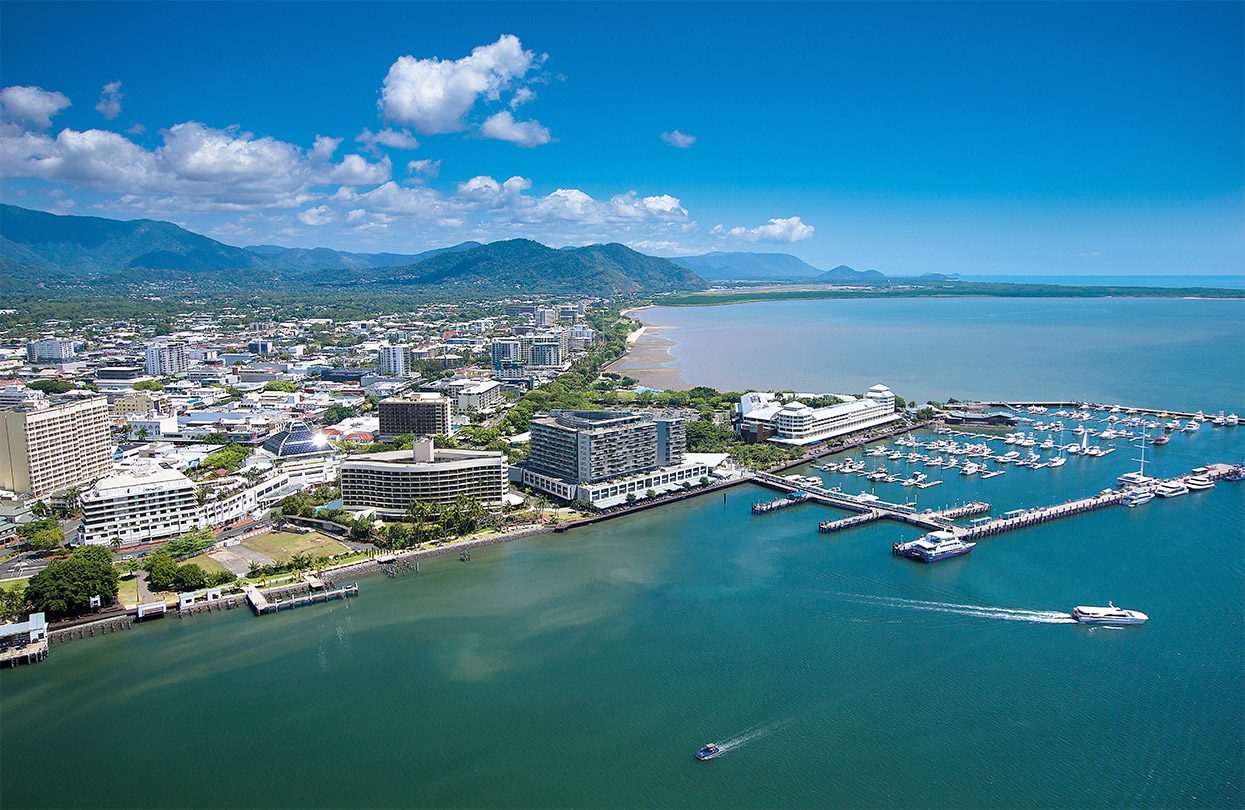
The city of Cairns hugs the coast of Tropical North Queensland, photo by Tourism & Events Queensland
The 14th-most populous city in Australia, Cairns was home to Aboriginal people for thousands of years before a British presence grew in the 1860s. The town was officially birthed in 1876 but blossomed a decade later, following the opening of a railway line to the southern town of Herberton that brought immigrants, workers that toiled on the land around Cairns.
Today, the city maintains its strong connections to agriculture, drawing on the bountiful produce harvested in the surrounding countryside to stock its fine restaurants and markets. Cairns has a relaxed, seductive ambience, low-rise save for some hotels, offices, and apartment buildings, populated by Art Deco buildings and fringed by a three-kilometre waterfront walk, the Cairns Esplanade.
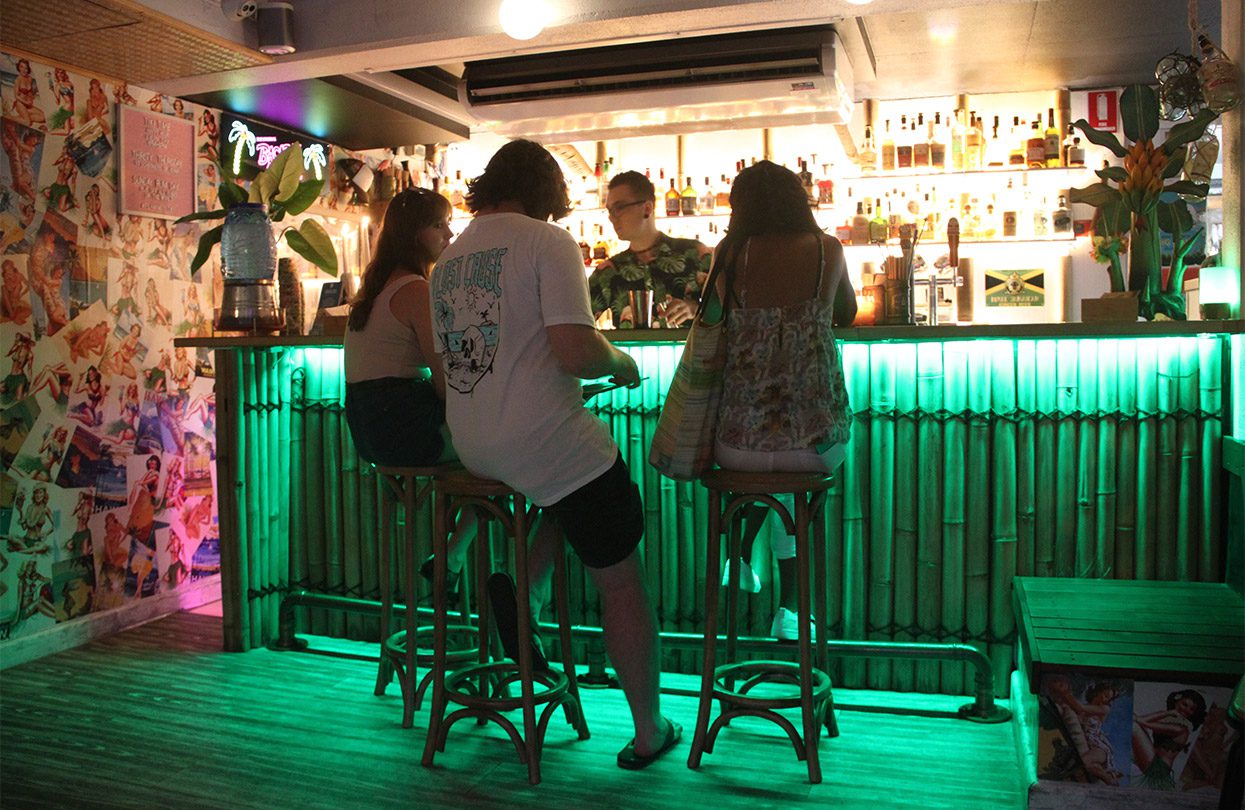
Drinking in the fun vibe at Flamingos Tiki Bar
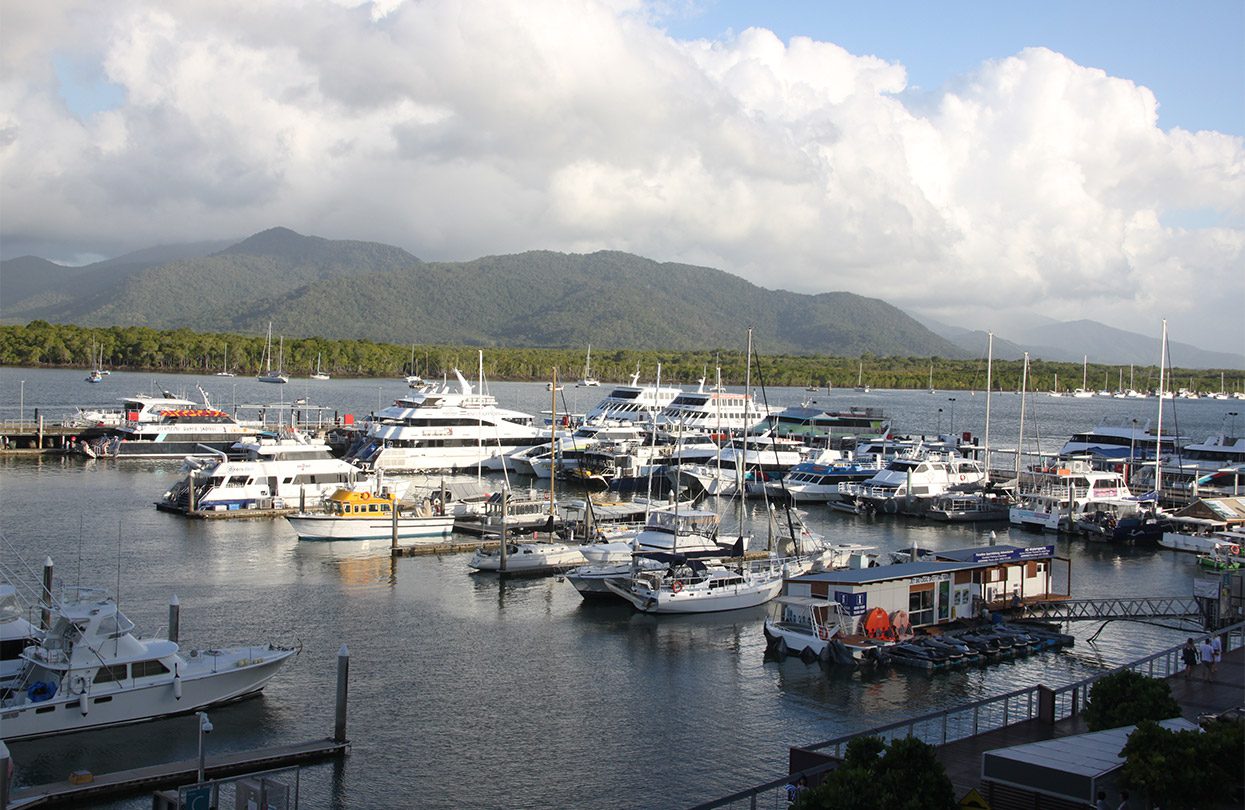
The marina by the Shangri-La, Cairns
It also has hotels of a calibre that would do a much larger city proud. There are three Crystalbrook properties, all opened within the last two years, a Hilton, and the triangular-shaped, marina-front Shangri-La with an often-packed barbecue restaurant called Backyard, and rooms that were modernised in a 2018 renovation that took out carpets and brightened the colour scheme. The core of Cairns is compact and walkable, with clearly labelled streets laid out in a grid system.
Things to do in Cairns
An entertaining, thirst-quenching way to appreciate the city is to take a trip with Cairns Boutique Walking Tours; the Hidden Bars excursion mixes history, short strolls, and delectable drinks at a whisky joint, a tiki bar, and a bar designed like a living room. Along the numerous waterfront restaurants, Ochre stands out for its modern Australian fare (the Ochre Salad, with mixed leaves, sun-dried tomatoes, and spiced macadamia nuts, is a meal in itself) and boardwalk seating that comes with cooling breezes and meditative views of the marina.
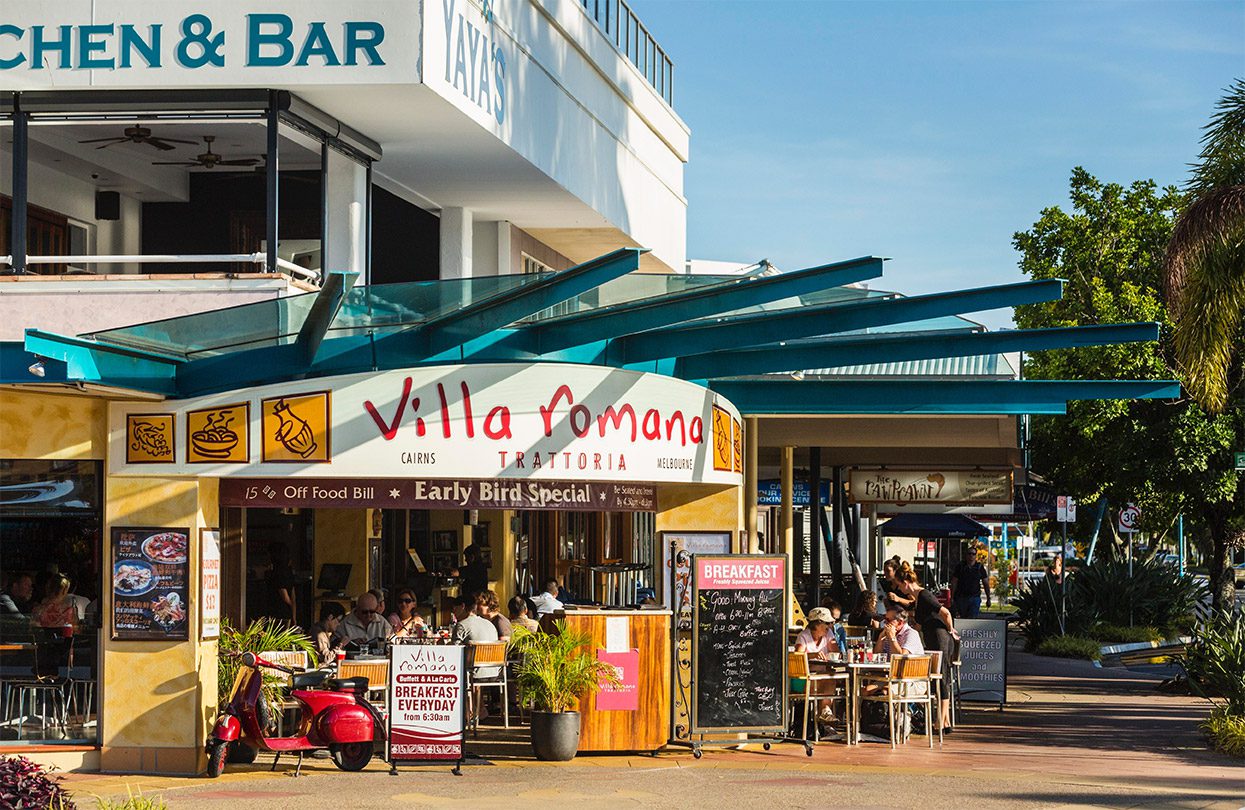
The Esplanade, photo by Andrew Watson Tourism and Events Queensland
The Esplanade is unmissable, especially around dusk, winding past shorebirds that wander tidal flats, a Ferris wheel, the 4800 square-metre saltwater Lagoon pool (free to use and open all year), and small parks where locals and tourists walk dogs, sit on the grass, picnic, laugh, play and enjoy the outdoors.
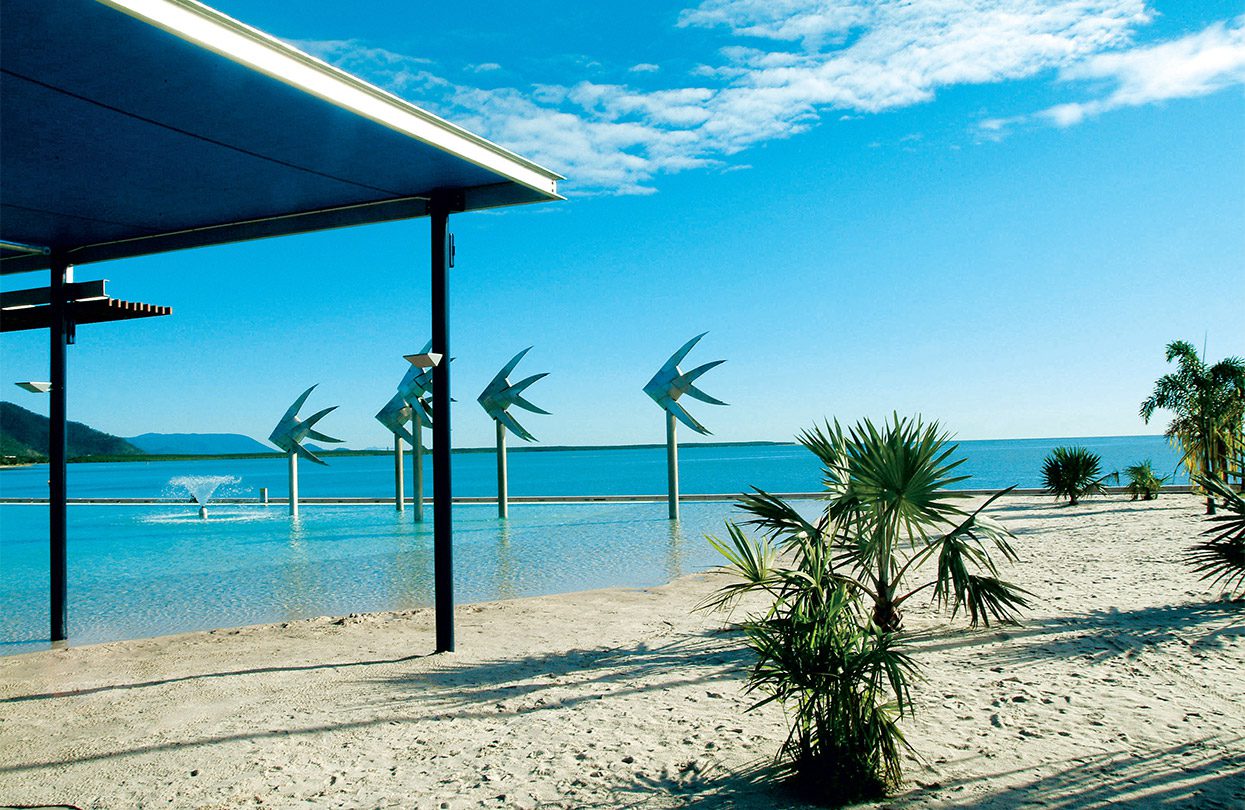
Year-round swimming is a treat at Cairn’s Esplanade Lagoon, photo by Tourism and Events Queensland
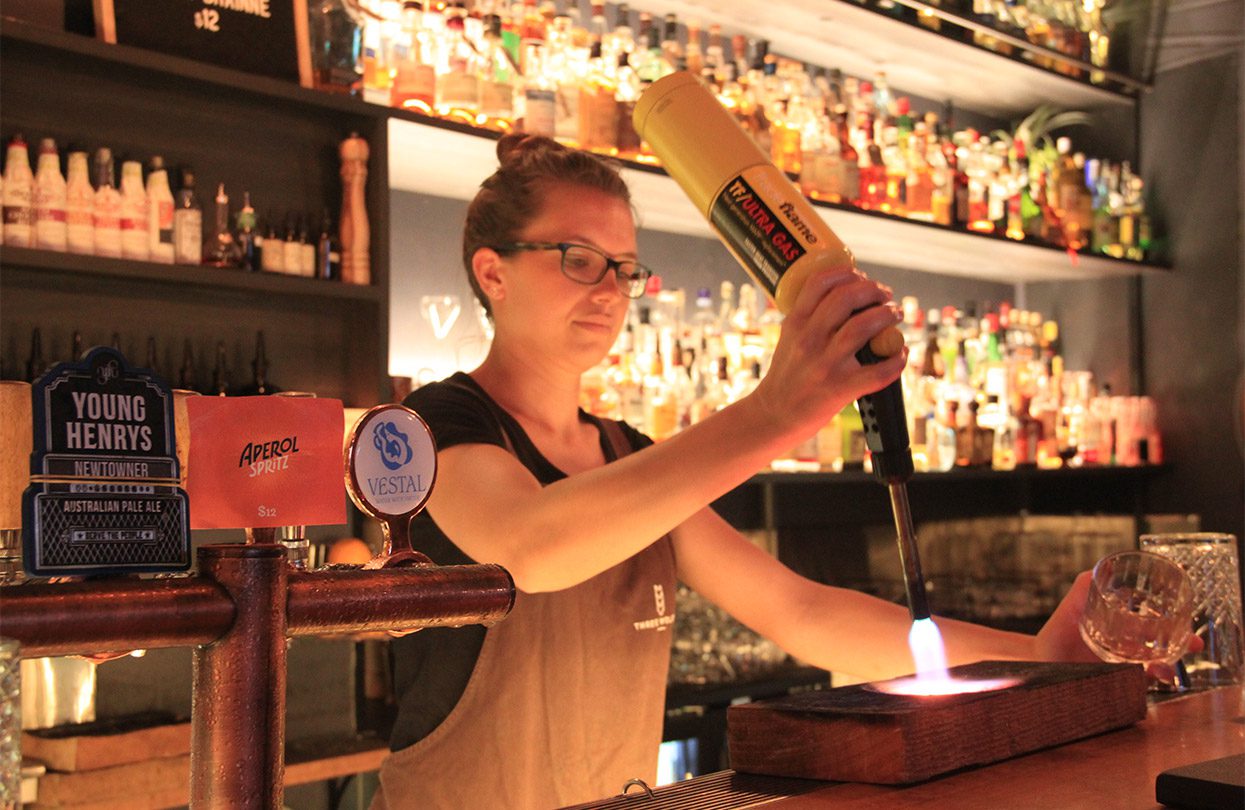
Working some magic at Three Wolves bar; Al fresco dining in the centre of the city
Cairns Great Barrier Reef
Cairns, of course, is the gateway to the Great Barrier Reef, and scores of operators offer trips to various parts of it — the constantly growing and regenerating reef is not a single structure, but a strand made up of 3000 different reef systems, home to 1500 fish species. The only reef trip with an indigenous approach is Dreamtime Dive & Snorkel, where Aboriginal and Torres Straits Island crew members showcase indigenous dance, music, and stories, and explain the mythology of how the reef was created.
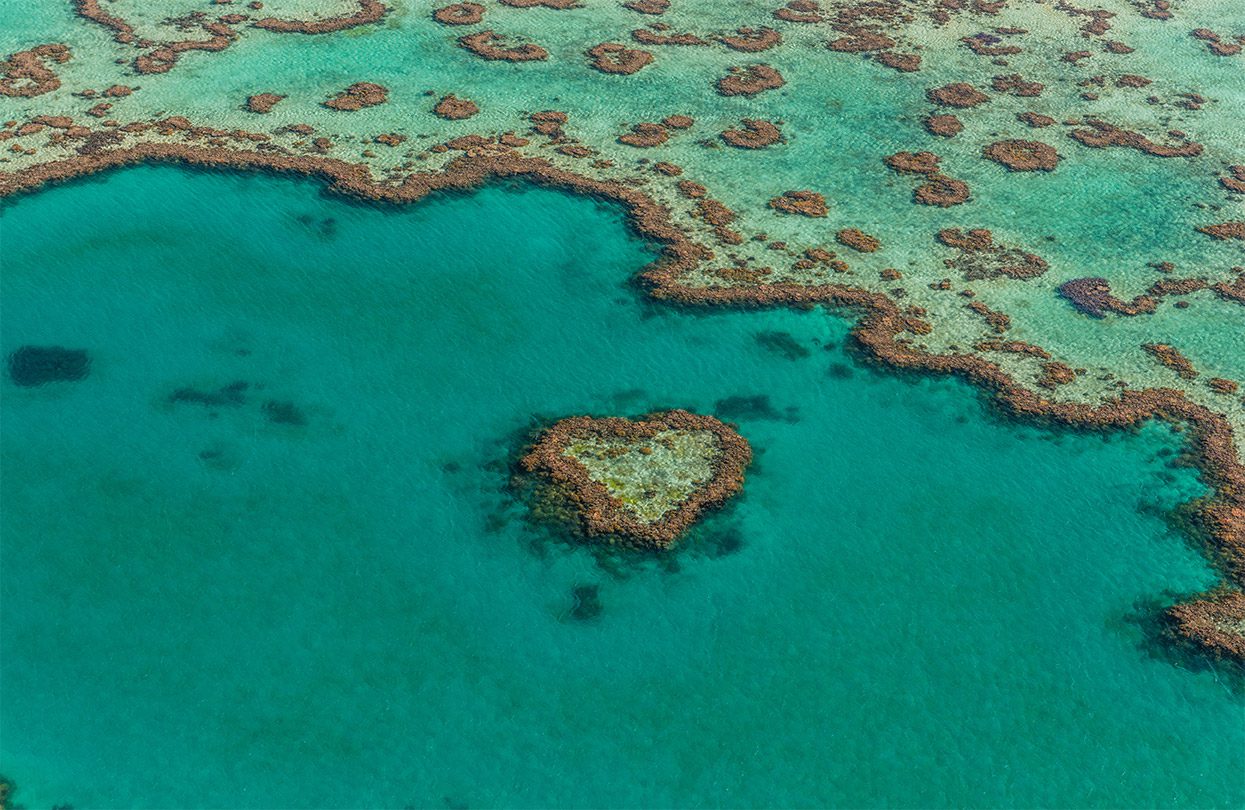
The heart of the Great Barrier Reef, Heart Reef, photo by Mia Glastonbury, Tourism and Events Queensland
In the time of the Yindinji people, a hunter speared a black stingray. The stingray flapped its wings and made the sea rise, covering the land. To stop the waves and strong winds, the Yindinji people rolled heated boulders into the sea and the Great Barrier Reef was formed. The snorkelling, on Moore and Miln reefs, is enchanting, the sea notable for its clarity and abundant aquatic life like giant cod, green turtles, and reef sharks.
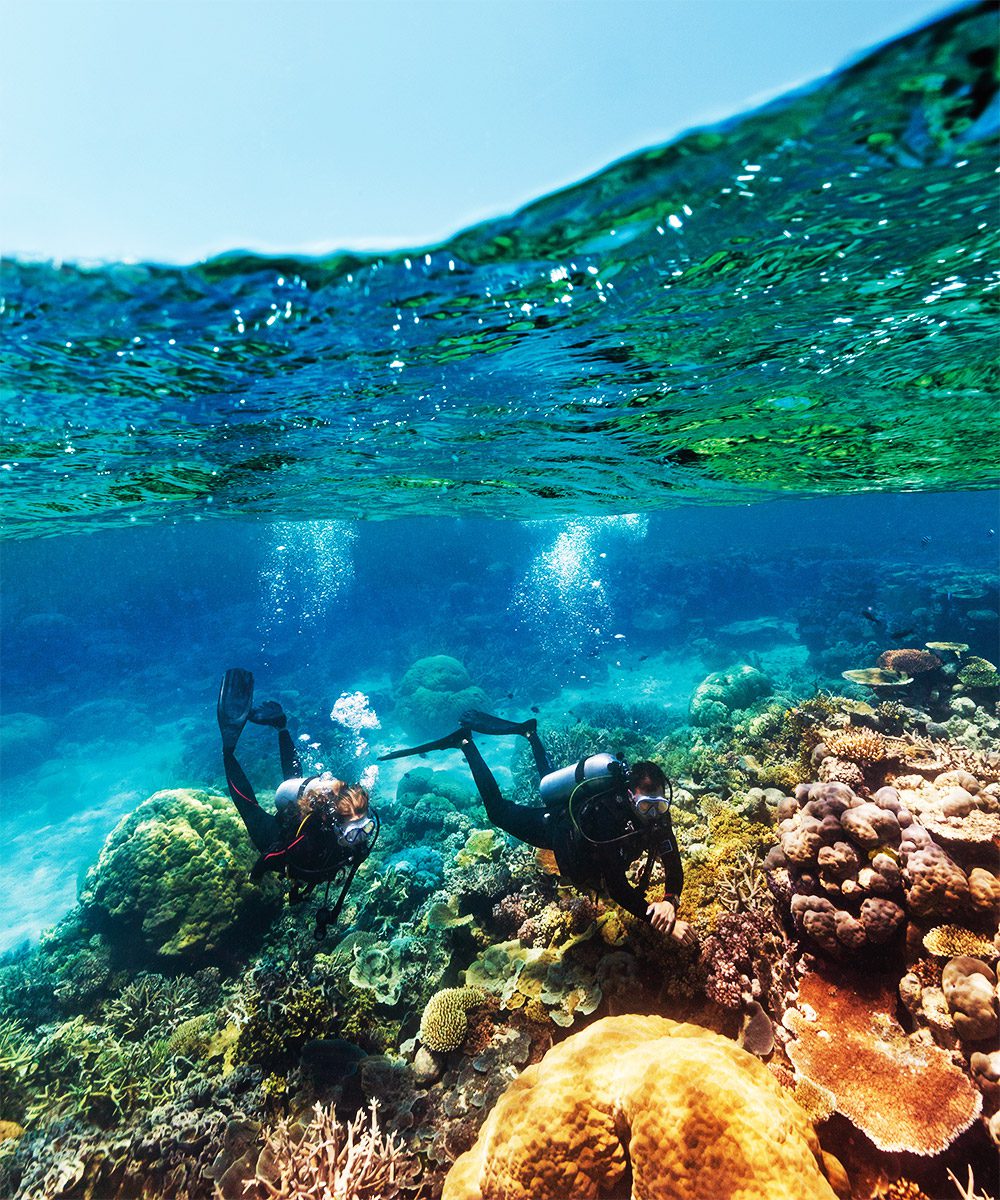
The aquatic jewels of Agincourt Reef, Tropical North Queensland, photo by Tourism & Events Queensland
Day Trips from Cairns
A short drive inland from Cairns is the Atherton Tablelands, a fertile plateau with rolling hills, waterfalls, options for adventure, and the charming village of Kuranda. Popularised in the 1960s by honeymooners, Kuranda can be reached by road, but the more evocative journey is by cable car and rail (between 2000-4000 visitors choose this combination every day). The Skyrail is a peaceful, 7.5-kilometre cable ride over Barron Gorge National Park; opt for the Diamond Class gondolas that come with glass floors as they allow riders to peer down on the canopy and visualise life as a bird sitting on the treetops.
The Kuranda Scenic Railway that rumbles from Cairns to Kuranda and back is a beautiful slice of nostalgia, with 37 kilometres of narrow-gauge track completed in the late 1800s, and heritage coaches of Silky Oak timber built more than a century ago. The trip, punctuated by 15 hand-carved tunnels, 55 bridges, and coastal views, also promises beautiful bends that enable those classic train-carriage photographs, and feels like a window onto a slower, simpler time.
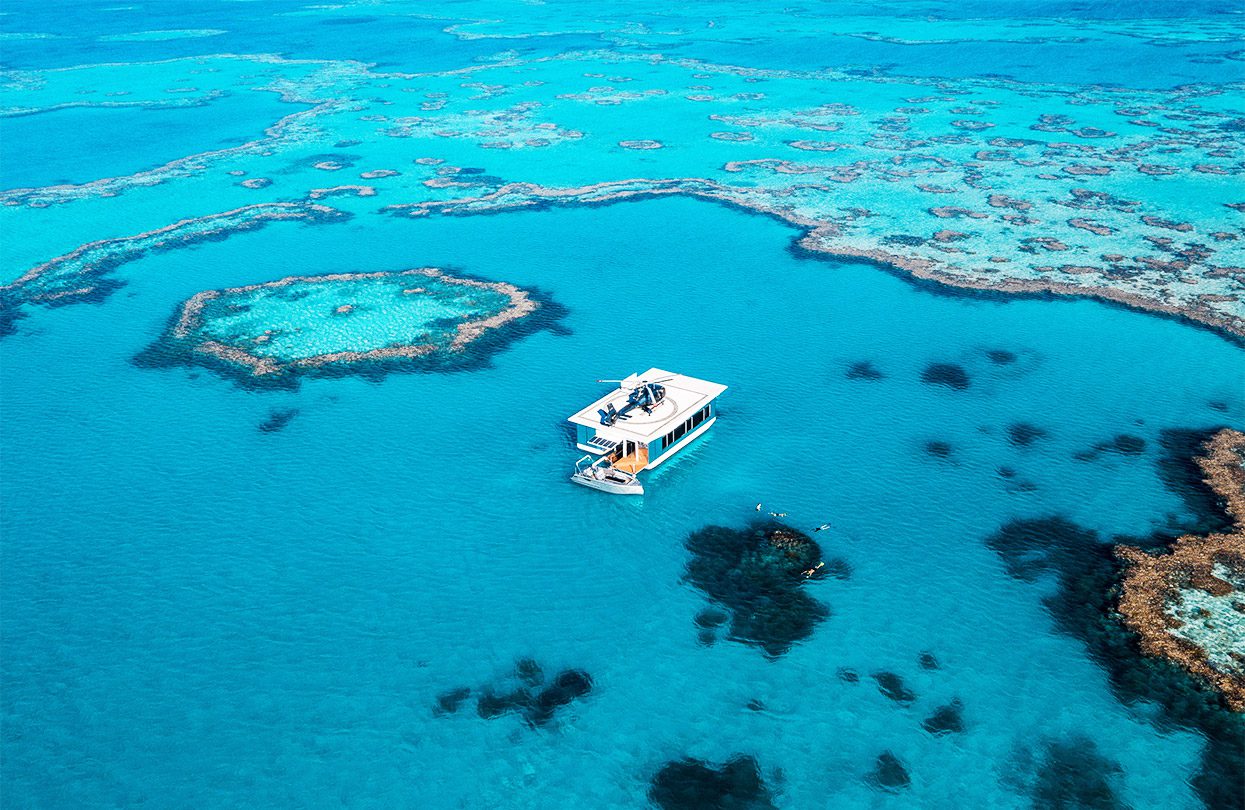
Helicopter flights offers visitors the ultimate scenic perspective of the reef, photo by Tourism and Events Queensland
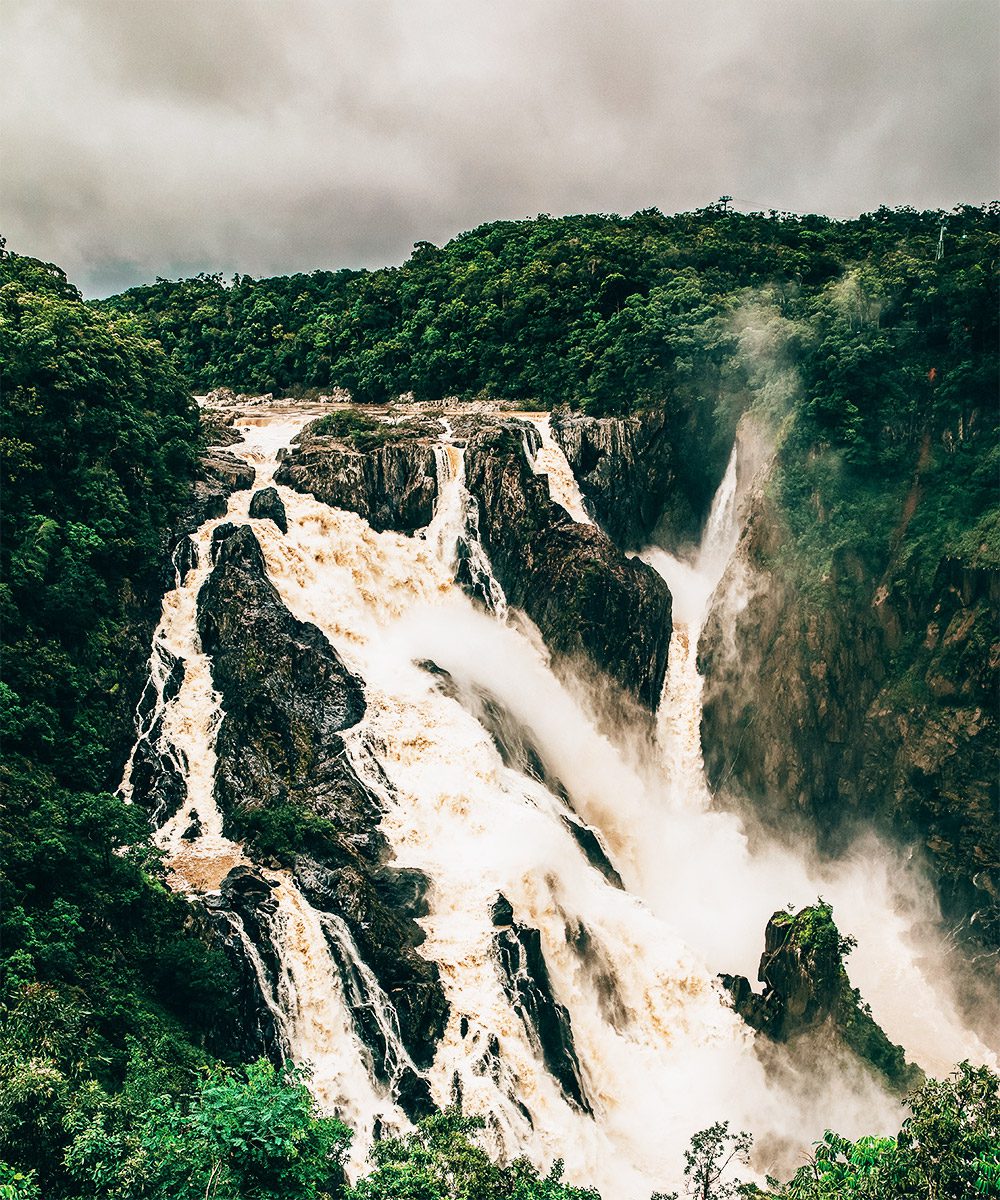
The Barron Falls, a stop on the Kuranda Scenic Railway, photo by Tourism and Events Queensland
The rainforest around Kuranda is teeming with fauna, with the largest number of ancient songbirds in the world, among them the common crooner, brown honeyeater, and satin bowerbird. This is also the domain of the musky rat kangaroo found only in the rainforests of northeast Australia.
In its early days, Kuranda was popular with hippies, and that free-spirited joie de vivre is still evident in the town, especially at the Kuranda Rainforest Market, a jumble of stalls spilling over a hillside that sells handmade jewellery, Japanese sweets, massage services, as well as plenty of places to eat (falafel, arepas, and nasi goreng are among the many options).
Shoppers elsewhere in the village will also find the Kuranda Arts Coop where all pieces are made by local artists, and Kuranda Fudge Bar, whose mammoth array of fudges include those made with Trinidad Moruga Scorpion and Carolina Reaper chillis. Nature lovers can take walks in the rainforest, visit a bird world, stop by the butterfly sanctuary, or board a river cruise.

A warm welcome to the beloved Kuranda Rainforest Market, photo by Tourism and Events Queensland

St. Saviour’s Anglican Church in Kuranda
Adventure Sports in Queensland
For die-hard thrill-seekers, the Tablelands offers the excitement of whitewater rafting. Foaming Fury brings adventurers down the Barron River on half- and full-day trips, where the largely tranquil navigation comes with occasional, shriek-inducing Class III rapids, and good-humoured guides enhance the riverine revelry. For water-lovers, numerous waterfalls and swimming holes dotted around the Tablelands provide clean options for a refreshing dip.
The region is also rich in gustatory diversions, with farms and producers that benefit from the varied environments and micro-climates — lowland and upland rainforest, savannah, and wetlands. More than 40 different commercial foods thrive here, including coffee, tea, milk, and sugar. Skybury, Australia’s oldest coffee plantation, produces about 40 tons of coffee per year, and its well-balanced, chocolatey beans are prized in speciality coffee circles.
The cafe here is a handsome spot for a meal with a coffee or a papaya smoothie (Skybury is also the largest producer of red papayas in Australia), an elevated deck looking out onto plains with eucalypts and radiant flame trees. Elsewhere in the Tablelands, avocado, lime, lychees, longan, and more grow, and The Humpy, a grocery store in the village Tolga, highlights what’s in season.
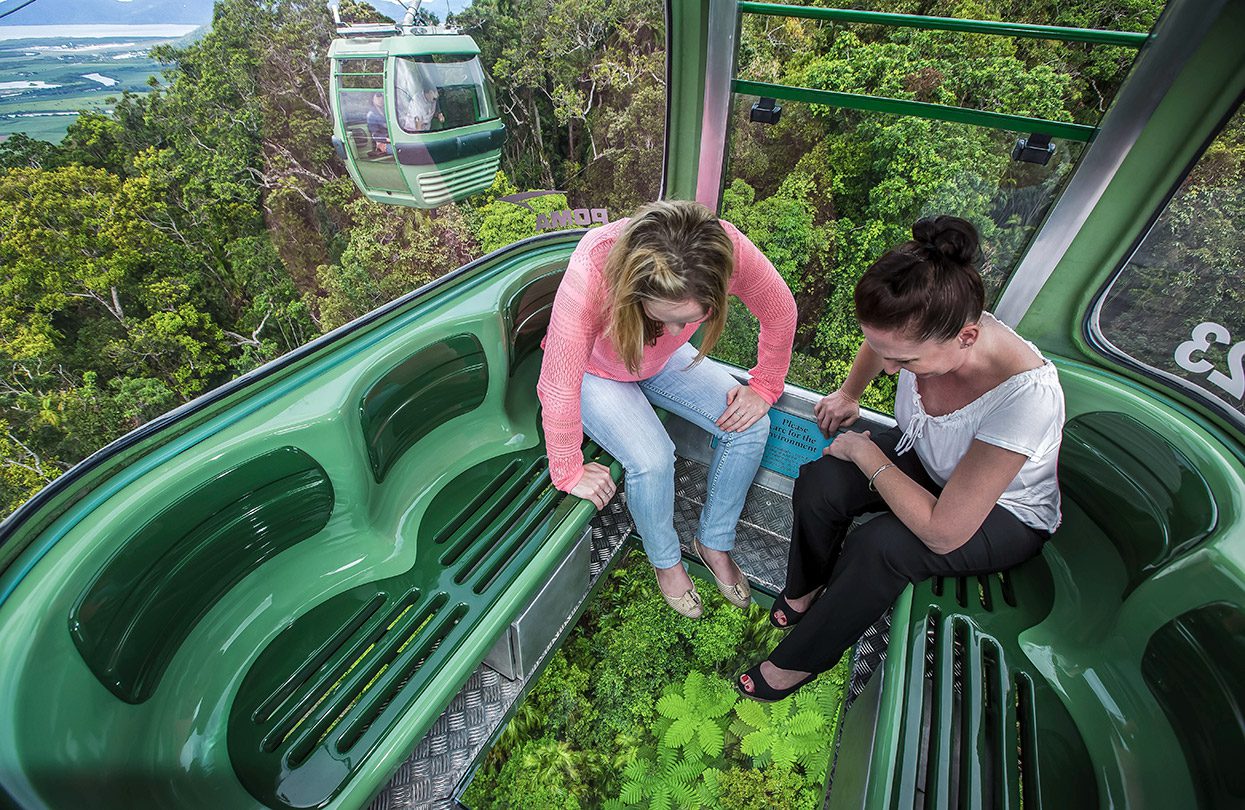
Diamond view
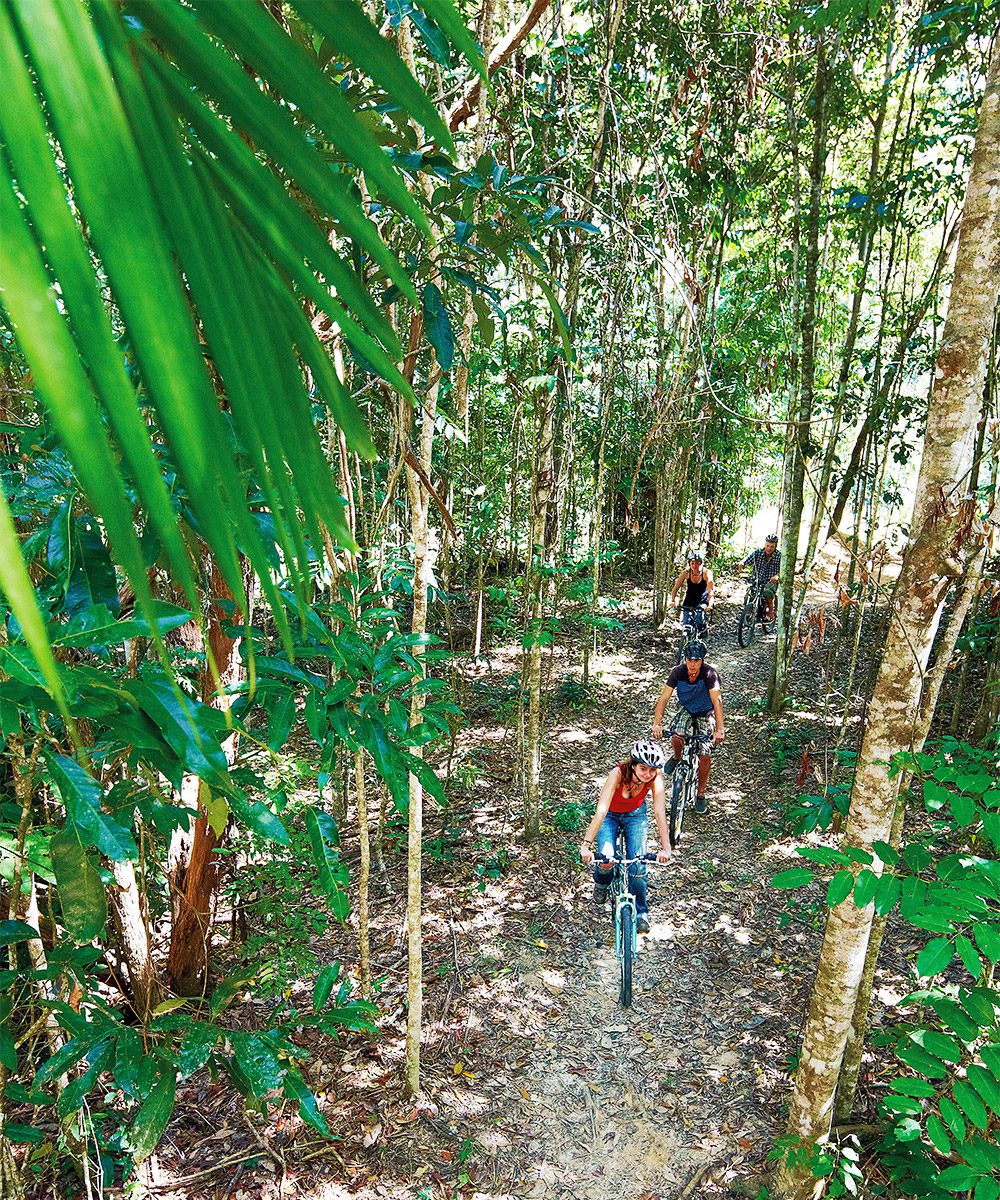
Cycling in the forests around Kuranda, photo by Tourism and Events Queensland
Road Trips along the Great Barrier Reef Drive
From Cairns, heading 140 kilometres up to Cape Tribulation, the Great Barrier Reef Drive is a stirring roadway that showcases an area where two UNESCO World Heritage Sites — the Great Barrier Reef and Wet Tropics rainforest — meet. The drive takes in winding coastal roads where craggy slopes descend to clear seas, expanses of rainforest, and broad plains filled with sugar cane.
En route north, stop at Palm Cove for lunch at Nu Nu, a beloved institution with welcoming staff, fantastic cuisine inspired by North Queensland, and gorgeous views of palm trees leaning toward the sea. At the northern end of the route, Cape Trib Horse Rides takes riders out on horses through the forest and then wading into the sea, a unique sensation with the seated rider knee-high in the water, the soft swell pushing back and forth.

Strolling around the Kuranda Rainforest Market
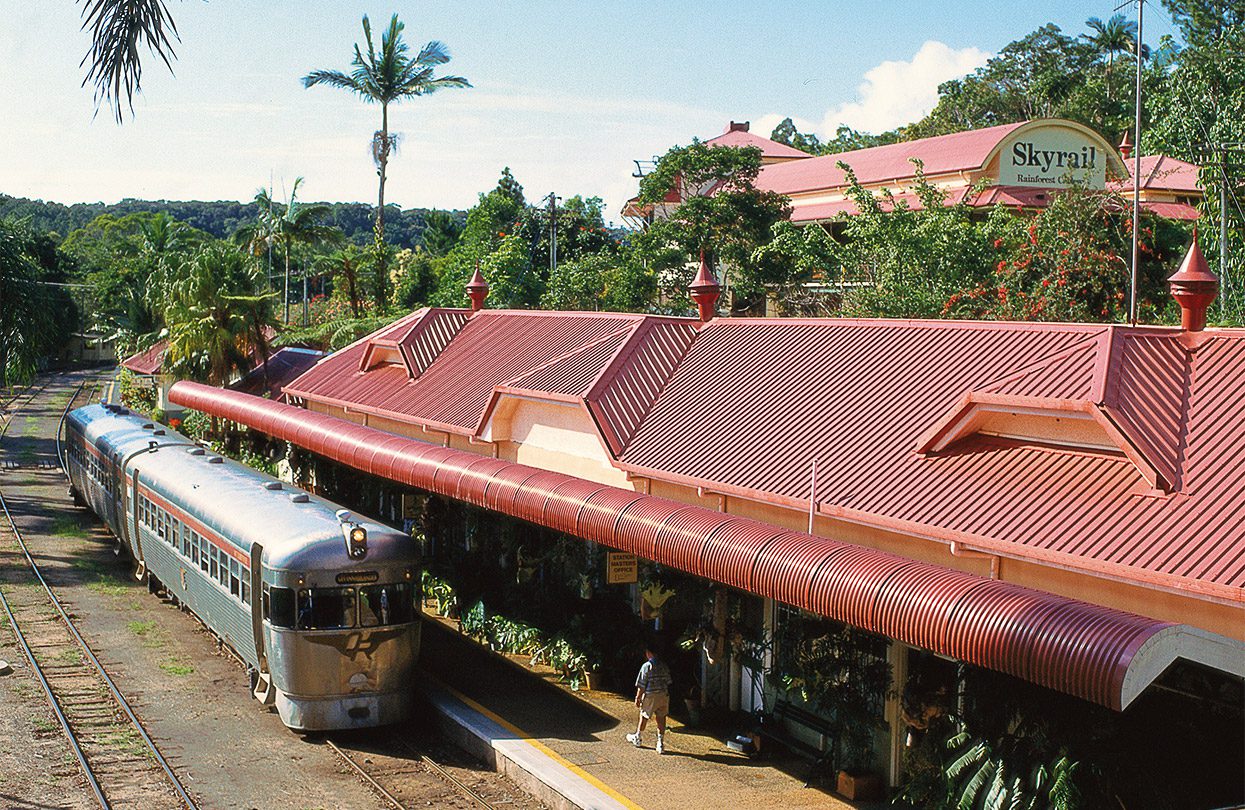
Kuranda Station, with its comfortingly historic ambience, photo by Tourism & Events Queensland
Easy, breezy Port Douglas is a sound base for exploration of the rainforest and it has a world-class luxury resort in the Sheraton Grande Mirage. Macrossan Street is the beating heart of the town, pulsing with hotels, restaurants, bars, and shops. At its terminus, by Port Douglas Park, visitors will find the vibrant Sunday morning market, an eclectic assortment of booths selling everything from jewellery and homemade mango ice cream to whimsical faces sculpted from coconuts and clocks meticulously fashioned from vinyl records (Palm Cove also hosts a Sunday market, though with a stronger focus on cooked foods).
At the edge of Port Douglas, near Captain Cook Highway, Wildlife Habitat presents Australian wildlife in natural environments. Here, the nocturnal Wildnight tours are an enlightening introduction to the marvel of local animals, and participants will learn how blue skinks can give birth to 70 live young, that cassowaries disperse seeds for 240 species of rainforest tree, that saltwater crocodiles can reduce their heart rate to two beats per minute, 15 of the world’s 41 python species live in Australia, and quolls have incredibly astute sense of smell.
Perhaps the most memorable part of the evening is the feeding of kangaroos: As the marsupials with soft eyes quietly approach, gently sniffing for food, their inquisitive nature recalls the amiable demeanour of dogs. It’s an irresistible, heartwarming encounter, and one that epitomises the rich wonders found in this underrated part of Australia.
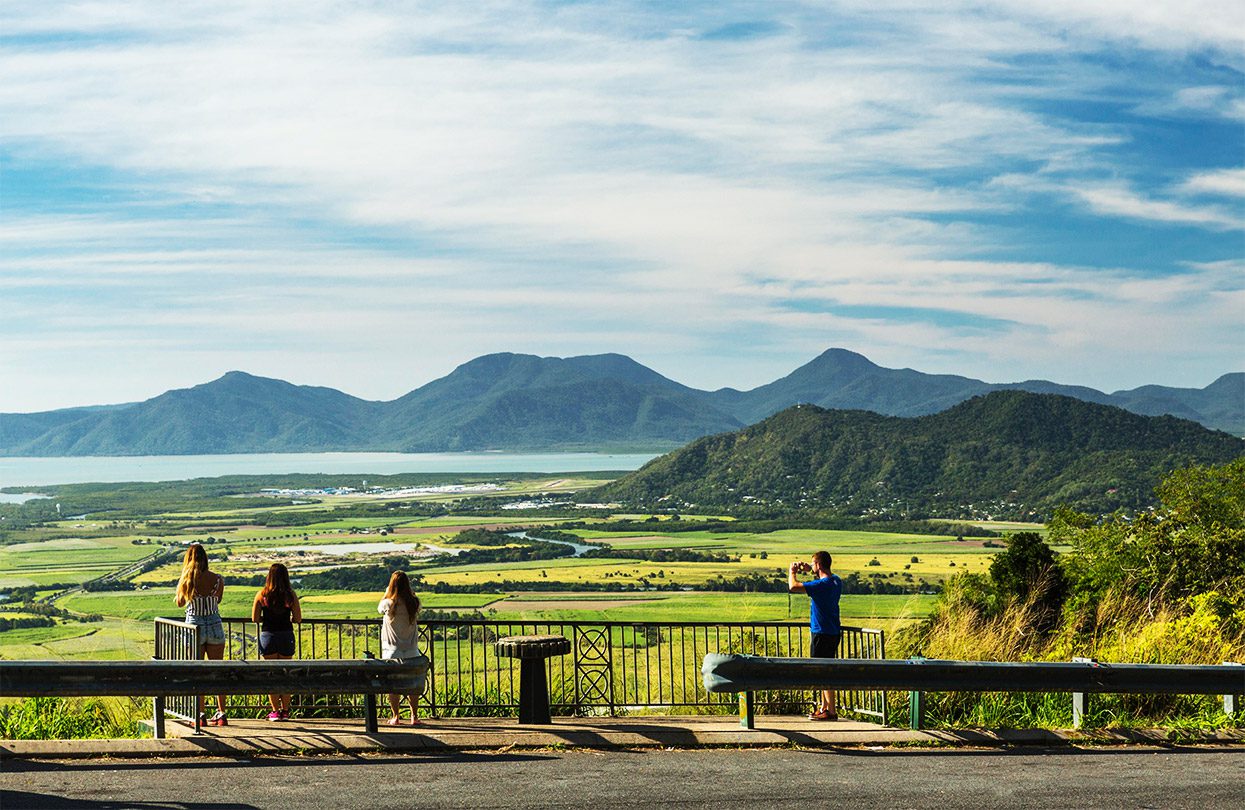
A view of the Queensland coast, photo by Andrew Watson, Tourism and Events Queensland
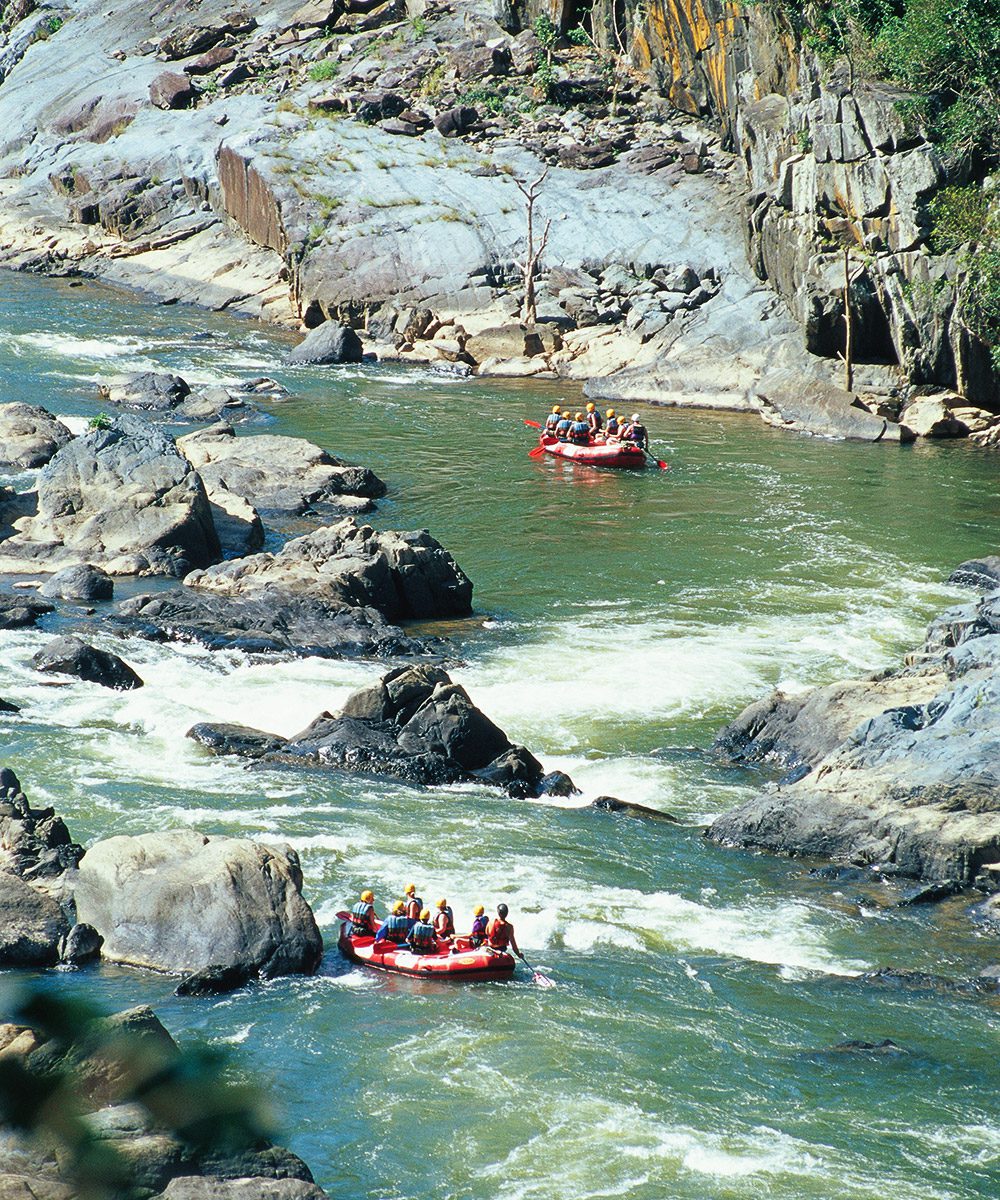
Rafting the Barron River right, photo by Tourism and Events Queensland
Best Places to Stay in Cairns
As its name suggests, Shangri-La, The Marina is situated right by a boat harbour, and is beautifully positioned for the terminal where trips to the Great Barrier Reef leave from, just one minute away by foot. Originally built three decades ago as a Radisson, the triangular-shaped building offers direct access to the Cairns Esplanade, the waterfront area with a walking track, the Esplanade Lagoon public pool, grassy areas where to relax, and restaurants close by.
The property itself was renovated in 2018, with carpets taken out and local accents added, and the mostly white colour scheme makes it a soothing place to return to at the end of each day. The Backyard hosts a hugely popular barbeque night on the weekends and dishes use herbs plucked from the resort’s garden that around the pool. shangri-la.com

This part of the Queensland is where two UNESCO World Heritage Sites meet — the Wet Tropics rainforest and the Great Barrier Reef, photo by Tourism & Events Queensland
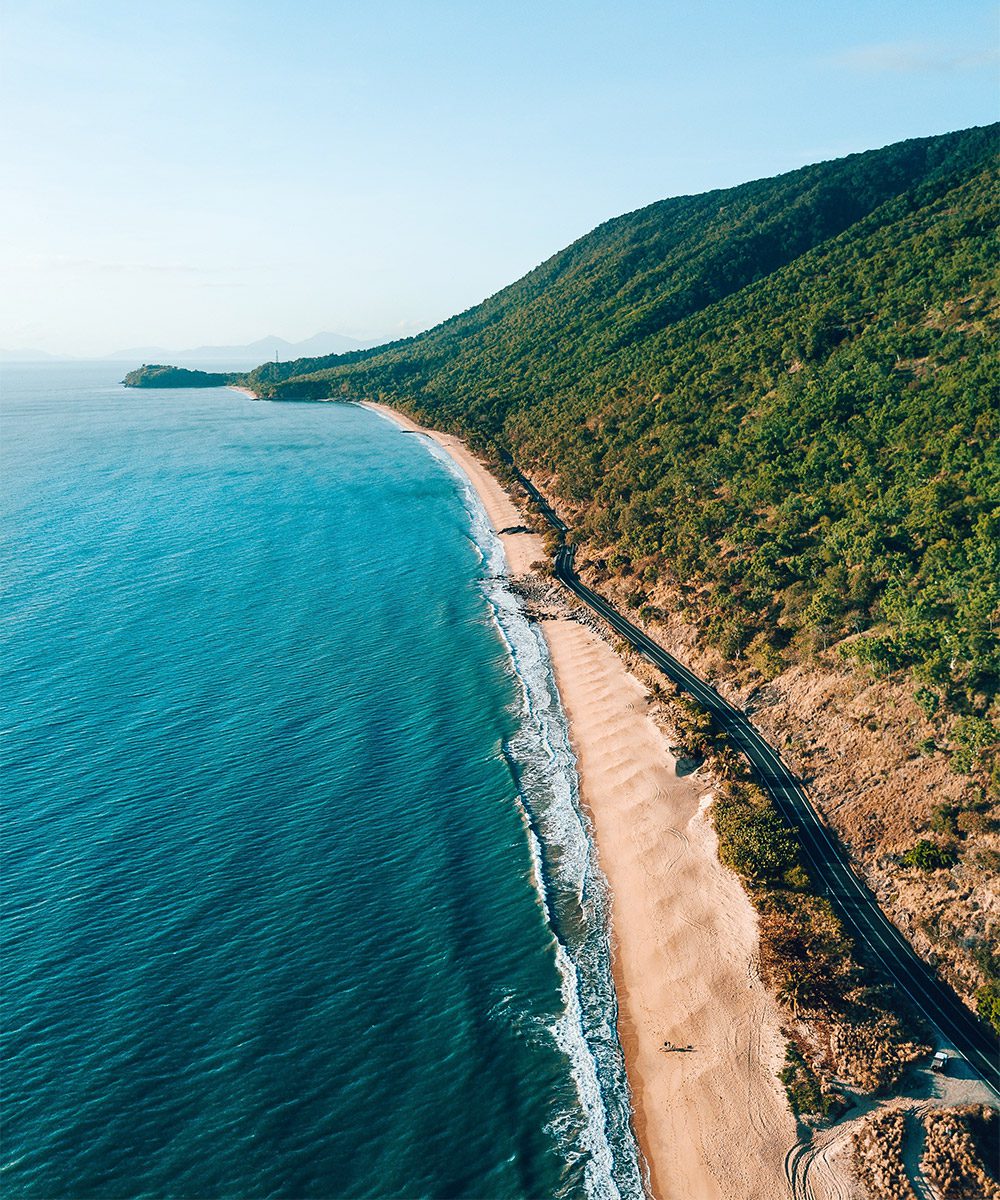
The Great Barrier Reef Drive, from Cairns to Cape Tribulation, takes in sumptuous scenery like this, photo by Tourism and Events Queensland

A retro car outside Daintree Village cafe
Best Places to Stay in Port Douglas
Set right on the town’s famous Four Mile Beach, the sprawling Sheraton Port Douglas has a series of connected pools that make it an aquatic paradise, while an 18-hole course across the road attracts golfers. Accommodations are set up among different wings around the lush tropical gardens, and light-toned rooms have large bathrooms and terraces/balconies. The impressive breakfast spread at Feast Restaurant will let you handsomely fuel up for the day. marriott.com ◼

